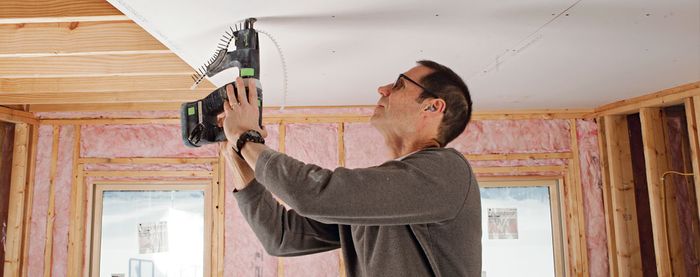Back-Blocking Butted Drywall Seams
Use this technique to minimize ridging between butted joints.

Throughout this drywall guide, I have stressed the importance of trying to avoid butted seams between the untapered ends of panels. If, however, you have to have butted joints, make sure to keep them away from the center of the wall or ceiling and take time to feather the taped joints carefully. No matter how careful a job you do, however, the joints may still be visible after the room is painted. I’m embarrassed to say that I found this out when I returned to a job to take some photos for an article. What had looked like a perfect job on the day I finished had developed slight ridges at the center of the butted joints. The deformation, known in the trade as “ridging,” was visible only in certain lighting, but it was enough to bother me.
Ridging
Building materials expand and contract as the temperature and humidity inside a building change. As the building materials move, tension builds up against the drywall panels. The tension is relieved as the panels bend outward, usually at a joint.
Ridging can occur in regular tapered-edge seams, but it is much more common in butted end joints. After the ridging has stopped, typically in six months to a year, the ridged joint can be blended into the surrounding area by applying joint compound to both sides of the ridge and feathering it into the panel surface. There is, however, a way to minimize ridging in the first place: by back-blocking the butted seam.
| WORK SMART: If ridging occurs on a finished wall, wait six months before refinishing the area. After six months, the area should have moved as much as it is going to move. |
Back-blocking
Back-blocking is designed to minimize ridging by placing butt joints between framing members. The drywall is hung perpendicular to the framing members, so that the butt ends can be reinforced along the back of each panel, behind the joint. The panel seams can be reinforced by installing a drywall panel behind the seam (see the drawing below). But commercial products designed for back-blocking are much easier to use. For more on this process, see “Back-Blocking the Easy Way.”
The Benefits of Back-blocking
|
Back-blocking the Easy WayWhen butted seams on nontapered ends are inevitable, position them between framing and use a back-blocking device to recess the joint automatically.
|










